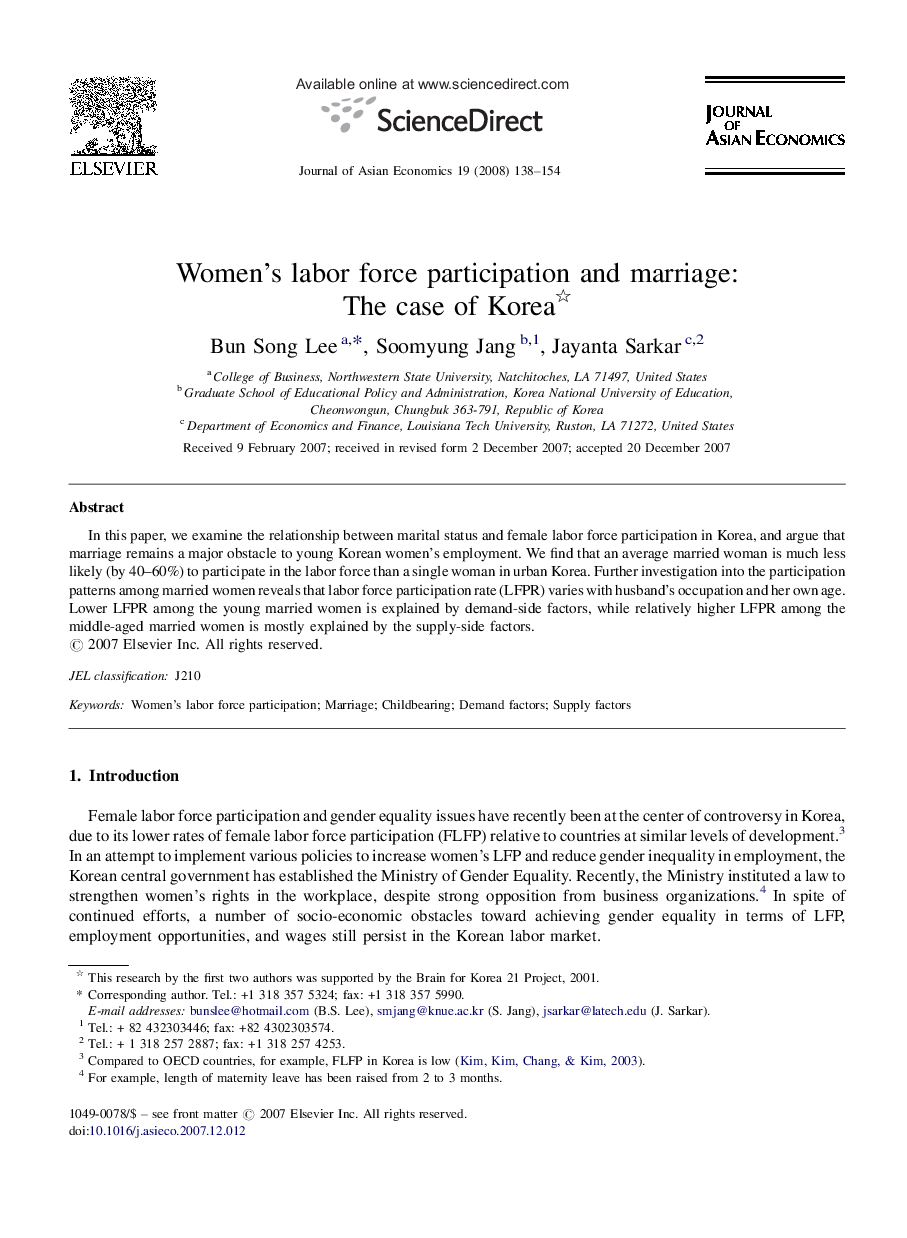| Article ID | Journal | Published Year | Pages | File Type |
|---|---|---|---|---|
| 5087692 | Journal of Asian Economics | 2008 | 17 Pages |
Abstract
In this paper, we examine the relationship between marital status and female labor force participation in Korea, and argue that marriage remains a major obstacle to young Korean women's employment. We find that an average married woman is much less likely (by 40-60%) to participate in the labor force than a single woman in urban Korea. Further investigation into the participation patterns among married women reveals that labor force participation rate (LFPR) varies with husband's occupation and her own age. Lower LFPR among the young married women is explained by demand-side factors, while relatively higher LFPR among the middle-aged married women is mostly explained by the supply-side factors.
Keywords
Related Topics
Social Sciences and Humanities
Economics, Econometrics and Finance
Economics and Econometrics
Authors
Bun Song Lee, Soomyung Jang, Jayanta Sarkar,
